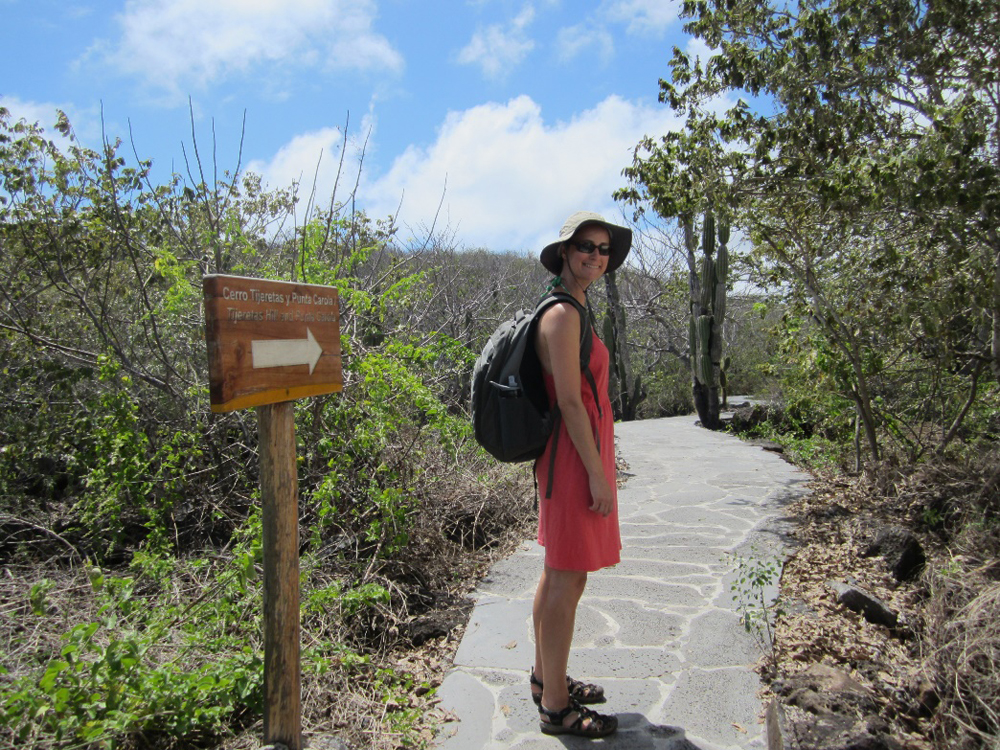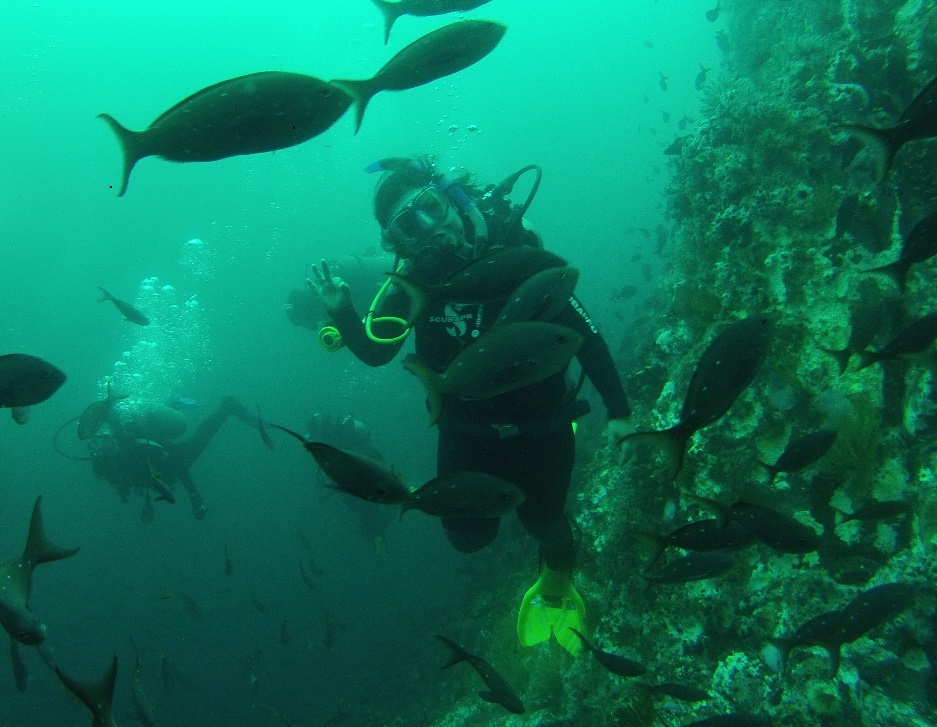International Womenʼs Day is an opportunity to celebrate the social, professional and cultural achievements of women all over the world. The Galapagos Initiative is home to incredible female leaders and scientists at UNC, USFQ, and at the Galapagos Science Center. For International Womenʼs Day this year, we will showcase seven of these accomplished women throughout the week.
Today we sit down with Jill Stewart, deputy director of UNC Center for Galapagos Studies and Singer Distinguished Professor of Environmental Sciences and Engineering at UNC.

How did you get interested in your research?
I have always been drawn to science as a way to figure out how things work. My upbringing built the foundation needed to pursue my career.
I have studied microbiology and chemistry and I love using both as a tool to understand bigger questions of environmental science. I work on establishing baselines for the health of ecosystems, with water as an essential component of that. I still have days where I canʼt believe I get paid to do this – to study science. As a foundation of truth I am drawn to science.
What brought you to the Galapagos?
I fell in love with the Galapagos my first summer teaching a study abroad course on the islands. I wanted to make it part of my research portfolio and have been glad to conduct research responsive to community concerns.
Since coming here and starting my work, we have been able to build the capacity to test water quality on the island, instead of trying to transport samples to the mainland. We have been able to establish a baseline for recreational, drinking, and wastewaters. By monitoring water quality, we can watch trends over time for health and conservation purposes. For example, we determined that contamination was occurring from the distribution, storage, and handling of the drinking water. We have also been able to link our water quality work to peopleʼs health which has been very rewarding.
As deputy director of the Center for Galapagos Studies, my role has changed to include more capacity building on the islands. I try to link researchers across UNCʼs campus and bring in units from different disciplines and departments. I work on a variety of topics like keeping programs running, managing seed grants, student travel fellowships – and more – but I enjoy linking and engaging with people the most.
How has your experience been working with other women in the Galapagos?
I have been privileged to work with an international group of supportive and amazing women in the Galapagos. I get to collaborate with women who are the top scientists in their field and they also often become my friends. We end up hanging out when we are not working together, and we support each other professionally and personally. It has been a wonderful gift in my life.
Traditionally, a lot of science has been done in silos. In the Galapagos, we are pulling people from across campus to answer the big questions. The women I work with are particularly good at collaboration across disciplines and working together. Producing science is more than just the sum of individual parts. To have successful, transdisciplinary science, it is necessary to build relationships. The Ecuadorian and US women working in the Galapagos also influence what type of research is done. We get to study women and childrenʼs health which help advance the science and is important to the people who live in the Galapagos.
What does International Womenʼs Day mean to you?
I think it is important to take a moment and recognize women, their contribution to society, and all they do. There is a long history of not recognizing women yet there are so many contributions to science that women have made that people donʼt really realize. For example, every microbiology lab uses agar, a gelatinous substance that is like “cell food” to culture microbes. Without agar, we would not have been able to cure infectious diseases. The idea to use agar in the lab was actually made by a scientistʼs wife, Fanny Hesse, back in the late 1800ʼs. That lab went on to identify the bacteria responsible for tuberculosis and cholera.

It is important that we go back, we listen, and now we recognize contributions such as these moving forward.
What is your advice to future women in STEM?
Go for it and donʼt be intimidated – dive in! Also, be protective of your time and energy. As women, we tend to get asked to do a lot of service, but donʼt let that distract you too far from your goals and keep the science first and foremost.
Also, I learned this in yoga, but I try to remind myself to “trust this” on the inhale, and “let go” on the exhale in order to bring a bit of balance (literally and figuratively) into my life.
By Kelly Weaver and Molly Herring ’23
